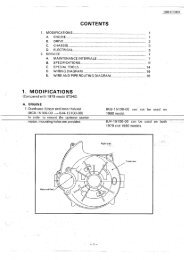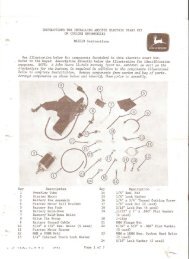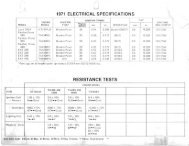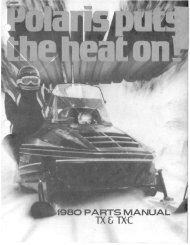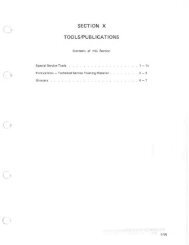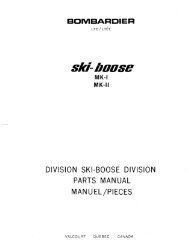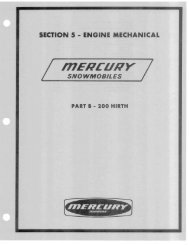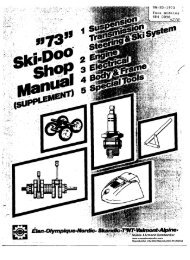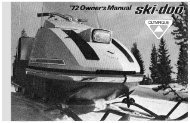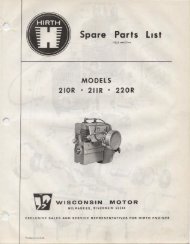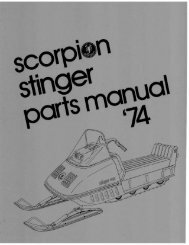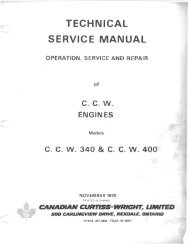You also want an ePaper? Increase the reach of your titles
YUMPU automatically turns print PDFs into web optimized ePapers that Google loves.
ENGINE ELECTRICALEFI ElectronicsType II System - 1991 To Current EFlsType II EFI systems incorporate an <strong>engine</strong> coolanttemperature sensor. This sensor is positioned in the<strong>engine</strong> water jacket where it is able to receive and relayreliable <strong>engine</strong> top end temperature to the ECU. Thissensor also controls the temperature light and a fail safemode. The "TEMP" dash light will come on and begin toblink slowly when the coolant reaches an unsafetemperature. If the temperature continues to increase, thelight will begin to blink faster; at this time the EFI systemwill increase the fuel being supplied to the <strong>engine</strong>.This increase in fuel will be noticed by a decrease in <strong>engine</strong> performance which is designed to protect the <strong>engine</strong> inan overheat condition. The increased fuel will continue until the <strong>engine</strong> coolant reaches a safe temperature andthe light goes out. Correcting this problem may be as simple as driving the machine slower and/or driving in a snowcondition which allows for more snow to be thrown onto the heat exchangers. If this condition continues, check thecooling system, coolant level, water pump belt tension, etc.To check sensor function, connect a select monitor and advance to mode F22. With <strong>engine</strong> cold, observe reading.It should be near the readings of the ATS and CTS in degrees centigrade. Start <strong>engine</strong> and observe temperatureincrease as <strong>engine</strong> warms up. If readings vary greatly or fluctuate from other sensor readings, check harness andconnectors for condition and repair as necessary. If no other problems can be found, and incorrect readingscontinue, replace sensor.Select Monitor ReadingsMode Description Normal ReadingF22 Water Temp Co Cold Engine Room TempBench testing of a temperature sensor can be accomplished by measuring resistance between sensor wireterminal and sensor shell; then comparing reading to graph shown. An easier and more accurate method is to usethe select monitor to indicate what temperature reading the ECU receives from the sensor. If the <strong>engine</strong> has notrecently run, the sensor should read at or near room temperature. A radically different reading from roomtemperature could indicate a problem with sensor, wire to sensor, any of sensor connections, battery, or ECU.Verify and repair any problem before attempting to operate machine.The sensor's resistance curve isshown at right. Resistance of thesensor is high when it is cold, andlowers as its temperature increases.This creates low current flow throughthe sensor at low temperatures andhigh current flow as the temperatureincreases. NOTE: The formula forconverting OF to °C is (0 F = °C x 1.8+ 32) ;."80402010642Resistance (kQ)2.5kQ /20° C10.60.40.2-20 o20 40 60 80 100 1204.598/94



